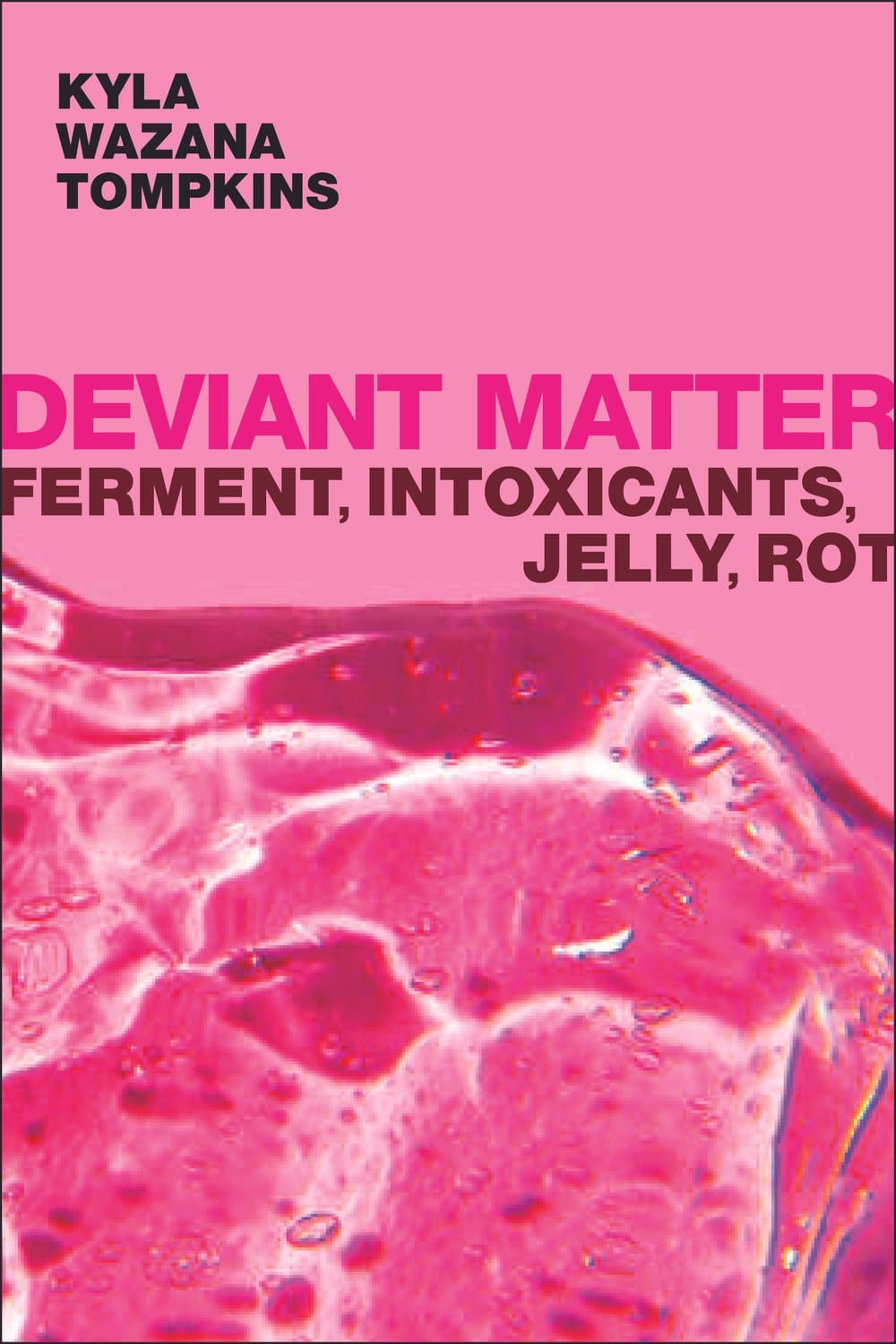Pushing Through a Hard Time
When I think of my gender identity, I think of a Jell-O blob. It's a mass, so it exists, but it's not exactly a 'thing.'

We're pushing through some heavy space-time right now.
I take that metaphor from a new book by Kyla Wazana Tompkins called Deviant Matter: Ferment, Intoxicants, Jelly, Rot. Tompkins is chair of the Department of Global Gender and Sexuality Studies at the University at Buffalo. Deviant Matter is an academic book that'll be published by New York University Press in December. I got a free advance copy from NetGalley.
A metaphor is a mental image, but this one — the push through density — feels pretty physical too.
Ferment, intoxicants, jelly, and rot are physical matter outside ourselves. Tompkins also understands them more abstractly as "sensual qualities" having to do with your "sensory organization" when you're minoritized. Jelly, in particular, is "what it feels like to push through a heavy space and time" while you're "fully present to that historical density, not only erotically and sensually but in accord with other, surrounding, touching, bodies."
As she explains gelatin:
"...gelatin renders waves of energy visible to the eye in real time, allowing scientists to measure, and the rest of us to witness, otherwise invisible energy through its effects as responsive, relational, material change. Gelatin makes visible what is generally invisible to the eye, like sound waves or other seismic and vibrational activity."
Tompkins wants "to come as close to thinking with matter as I can."
Now I'm thinking of what this political moment would feel like if it registered in Jell-O.

We often treat the sense of sight as the best or most important. Yet ferment, intoxicants, jelly, and rot prompt us to use more touch or smell, thereby challenging our "classical orderings of the senses." They move. They remind us of what's difficult to control or document, i.e, what "escape[s] disciplinary and therefore archival capture." Like queerness.
Gelatinous identity
Those of us who gender transition are often asked whether our genders are stable: if we've always felt this way, and if we expect we always will.
It's an odd question, in part because most people do have a stable sense of self, and yet everyone grows. It's tricky to explain how anyone stays the same yet also changes. Should we locate our gender in the stability, or should we locate it in the change?
When I think of gender identity (my own, anyway), I think of something like a Jell-O blob. It's a mass, so it exists, but it's not exactly a "thing," and it's continuously changing shape, if barely perceptibly so. It's neither liquid nor solid. Pliable, bouncy, melty. A colorless aura. It's in me, or it is me, yet I can't possess it. It's a concept, but maybe also a feeling. I don't have a visual image of my gender identity. I think of "it" as a description of the way I inhabit my body and my life. It's like an enduring set of facts about myself.
When we remember who we truly are, we can show up all the more boldly in the world.
I imagine that, when we "push through a heavy space and time" like this political moment we're in, the jelly is around us, but we too are jelly. We quiver, but we're a force to be reckoned with. Just as much as the moment can change us, we can change it.


